Einstein and Standing Waves
Since Einstein's formulation of special relativity in 1905, the most important development in physics was the formulation of quantum mechanics in 1927.In quantum mechanics, free particles are running waves, and extended objects consist of standing waves. The hydrogen atom is a standing wave, so is the proton in the quark model. Click here for a story of the moving hydrogen atom.
- Of course, there have been many attempts to make quantum mechanics
consistent with consistent with special relativity. Quantum field theory
is a giant step toward this goal. In this theory, we are led to
calculate the Lorentz-covariant S matrix. We can compute the S-matrix
elements using Feynman diagrams. However, all
Feynman diagrams have legs corresponding to free particles. This means
that the S matrix is designed for dealing with scattering processes.
How about bound states? Can we use Feynman diagrams for computing bound-state problems? Indeed, there have been efforts to deal with bound-state problems in terms of poles in analytic S matrices. However, we do not know how to deal with boundary conditions of the wave function in this S-matrix approach. In fact, there is a concrete example which will lead to a disaster in the S-matrix method for dealing with bound-state problems. You may click here for a concrete example.
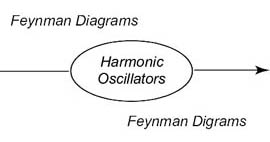
- In 1970,
Feynman suggested that, instead of Feynman diagrams, we may use
harmonic oscillators for Lorentz-covariant bound-state problems,
and published a
paper with his students in 1971.
However, Feynman and his co-authors did not use correct mathematics to satisfy all the known physical laws of quantum mechanics and special relativity. Is it possible possible to correct their mathematical errors?
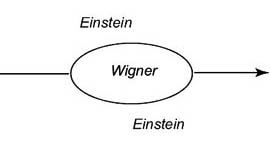
- Yes, it is possible if we import Wigner's mathematics.
In 1939, Wigner published a paper on the subgroups of the
Lorentz group invariant. Wigner considered the maximal subgroup of
the Lorentz
group which leaves the four-momentum of a given particle invariant.
These subgroups are called Wigner's little groups.
While the Lorentz group has six independent parameters, the little group has only three parameters. For a massive particle, there is a Lorentz frame in which the particle is at rest. In this frame, the little group is the three-dimensional rotation group.
Likewise, for an extended object consisting of standing waves, its boundary condition has a three-dimensional rotational symmetry. With this point in mind, we can construct a representations of the little group using harmonic oscillator wave functions. Click here for a paper on this subject.
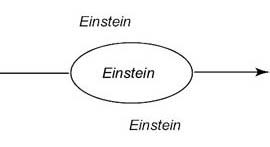

- Thus, after appropriate fix-ups, Feynman's oscillator wave functions
should satisfy the Lorentz-covariant boundary conditions dictated by
the symmetry of Wigner's little group.
Since Wigner's little groups are subgroups of the Lorentz group, Einstein prevails both insider and outside the particle.
- There is at least one set of wave functions which satisfies the Lorentz-covariant
boundary conditions, and which can be placed in Step 1 of the Comet/Planet table
given at right. It is indeed gratifying to be fill in this step using only
the existing principles of quantum mechanics and relativity. We did not have
to invent any new physics. The next step is to construct one mathematical
device which will take care of both scattering and bound states.
The most cruel question is whether this covariant bound-state wave function can explain anything in the real world. Click here for an interesting story.
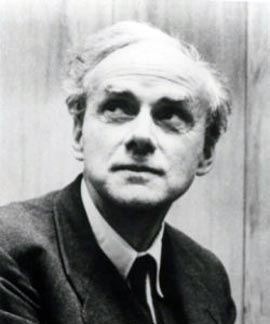
-
We should note also that Paul A. M. Dirac spent much of his research
time to construct harmonic oscillator wave functions in the
Lorentz-covariant world. In this connection, we should point out
the following three papers.
- P. A. M. Dirac, Proc. Roy. Soc. (London) A114, 243 (1927).
- P. A. M. Dirac, Proc. Roy. Soc. (London) A183 , 284 (1945).
- P. A. M. Dirac, Rev. Mod. Phys. 21 , 392 (1949).
If we combine these papers, we end up with the same conclusion as given above.
Paul A. M. Dirac a poet. His writings are like poems. However, His papers do not contain figures. It was a rewarding experience for me to translate his poems into cartoons. Click here for a story.
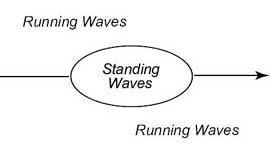
|
- copyright@2013 by Y. S. Kim, unless otherwise specified. Dirac's
image is from the Emilio Segre Visual Archives of the American
Institute of Physics.
- Click here for his
home page.
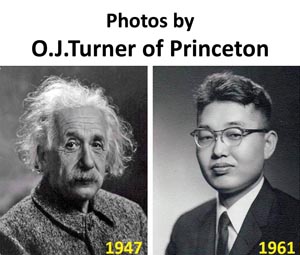
| |
|